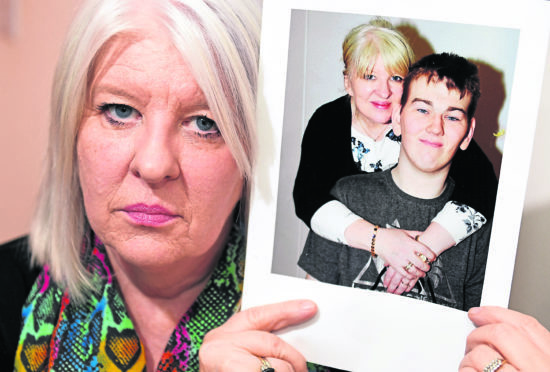People with autism and other learning disabilities are often left traumatised by their experiences in psychiatric units, a report has found.
The Press and Journal has previously reported on the case of Kyle Gibbon, a Kemnay man who has been trapped in The State Hospital at Carstairs for most of his adult life.
The 31-year-old, who suffers from ADHD and a learning disability related to autism, has been admitted there almost continuously since the age of 18 despite not having any criminal convictions when he was admitted.
Now a new report into the Mental Health Act has revealed a number of troubling claims about the treatment of patients with autism and other disabilities.
The study is the first part of a wider review which was ordered by the Scottish Government after claims about mistreatment of Mr Gibbon and others emerged.
The panel who wrote the report spoke to 103 people, 76 professionals and 21 different organisations with experience in the field.
Among the claims made in the report is that patients have been violently restrained, sedated and secluded.
The report states: “Some people felt that staff used treatment, rules and restrictions as a threat to make them behave in a certain way.
“A very small number of people told us of situations in hospital in the past where people had been harmed by staff.
>> Keep up to date with the latest news with The P&J newsletter
“These situations had been reported and fully investigated, with action taken to protect the person.
“Some people told us they didn’t tell anyone about things that happened, because they were scared that they would be punished for doing this.”
During his stay at the psychiatric hospital, Mr Gibbon has been living alongside rapists and murders, which his mum believes has had a damaging impact on his mental health.
He has also endured a number of hardships, including one occasion when his arm was broken while he was being restrained – leaving him with 45 staples and two metal plates.
“For example they were worried that activities might be taken away or they might not be able to see visitors. Some organisations told us this as well.
“We are committed to improving the lives of people with learning disabilities or autism, and ensuring patients receive the care and support they require.
“Alternatives to restraint should always be considered first, and the use of restraint and rapid tranquilisation should only be a last resort.”
Mr Gibbon’s mum Tracey said she felt relieved at the findings in the report.
“It’s a bit of a relief because people don’t believe you,” she said.
“And now to it’s in print and it’s not me that wrote the report.
“At least someone must be listening. The only people that don’t seem to be listening is the government, when are they going to do something?
“It’s obvious that this is happening to other people, we can’t all be wrong.”
